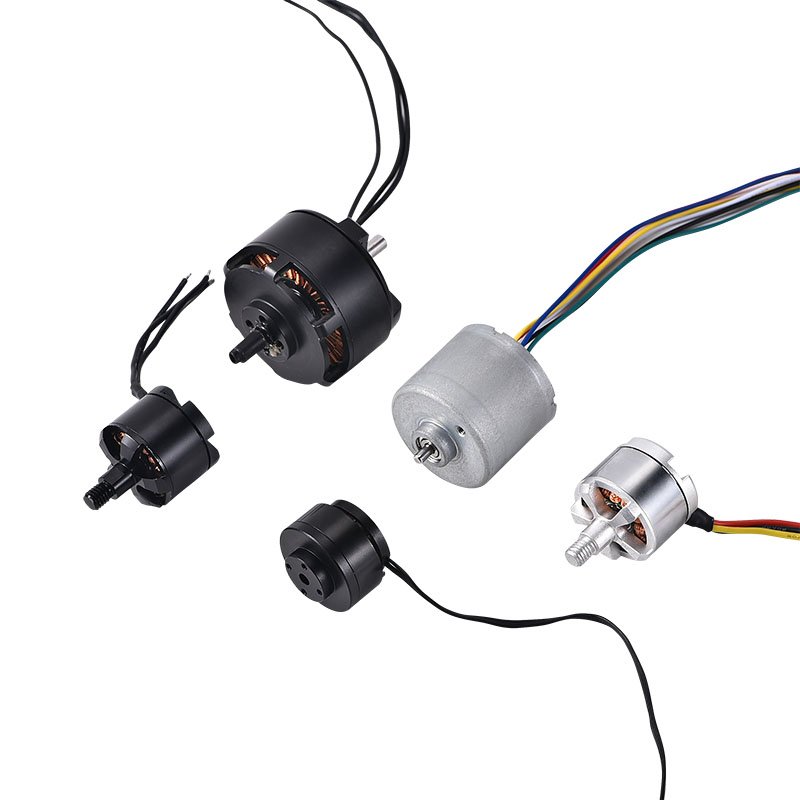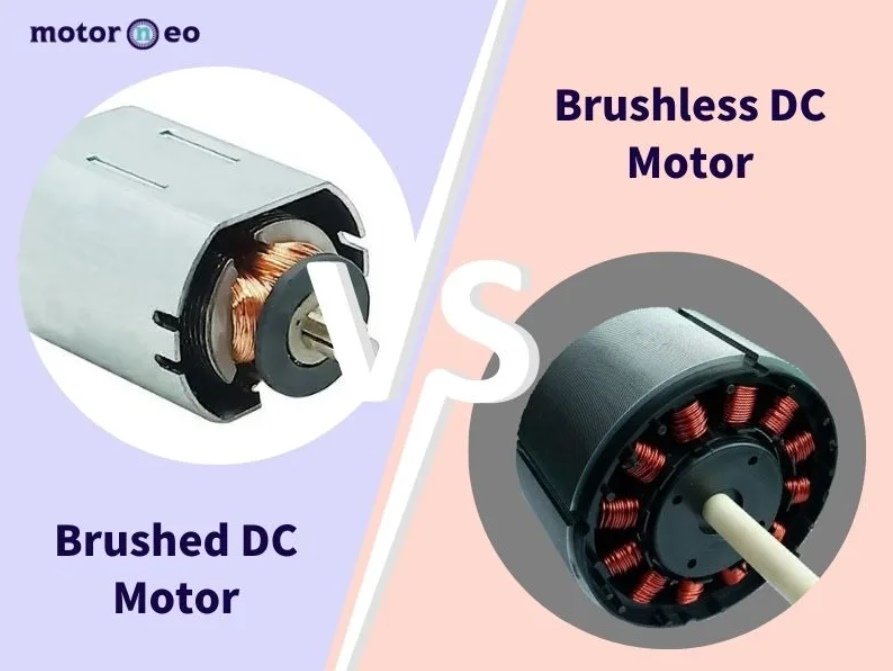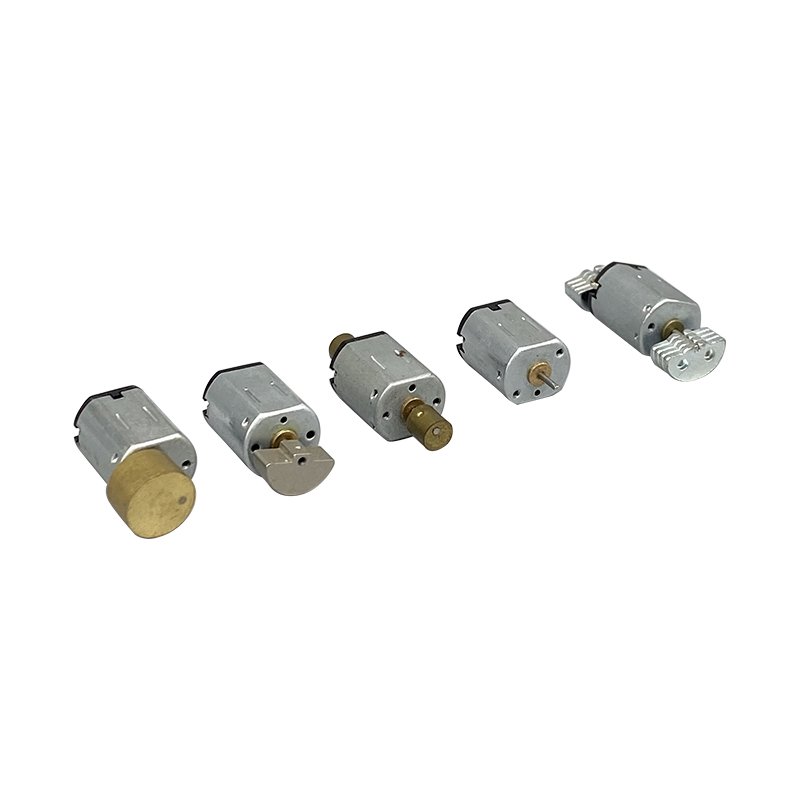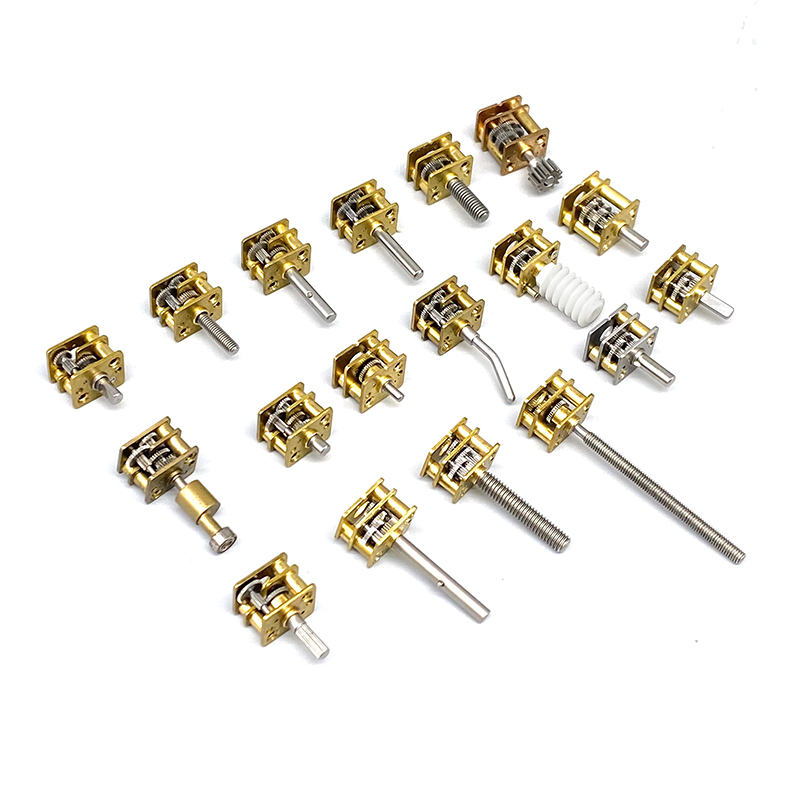Choosing between a brushed motor and a brushless motor for your rc vehicle depends on what you want from your driving experience. If you are just starting or want simple control, a brushed motor works well. You get good low-end torque and easy setup. If you want higher speed, longer runtimes, and less maintenance, a brushless motor is the better choice. Look at the table below to see how brushed motor vs brushless motor in rc vehicles compare for speed, torque, and cost. INEED offers both types of motor solutions for any rc vehicle needs.
Feature | Brushed Motor | Brushless Motor |
|---|---|---|
Best For | Beginners | Racers |
Speed | Lower | Higher |
Torque | Good | High |
Maintenance | Brushes wear | Maintenance-free |
Efficiency | Lower | Higher |
Upfront Cost | Cheaper | More expensive |
Key Takeaways
Brushed motors are ideal for beginners. They offer easy setup and good low-speed control at a lower cost.
Brushless motors provide higher speed, better efficiency, and less maintenance. They are perfect for racing and advanced RC setups.
Consider your budget and needs. Brushed motors are cheaper upfront, but brushless motors save money on maintenance over time.
When upgrading, ensure compatibility with your electronic speed controller and battery. INEED offers support for smooth transitions.
Choose the right motor based on your RC vehicle type. Match motor specifications to your vehicle’s weight and desired performance.
Brushed Motor vs Brushless Motor in RC Vehicles
Quick Comparison for RC Vehicle Users
When you look at brushed motor vs brushless motor in rc, you see clear differences in how each motor works and what you get from your rc vehicle. A brushed motor uses brushes and a commutator to switch the current and make the rotor spin. This design gives you simple control and good low-speed torque. A brushless motor uses electronic controllers and magnets to spin the rotor. You get higher efficiency, faster speeds, and less maintenance.
You can see the cost difference in the table below. A brushed motor usually costs less. A brushless motor can be up to twice as expensive. This price gap matters when you choose your first rc vehicle or upgrade your setup.
Motor Type | Cost Comparison |
|---|---|
Brushed | Generally more affordable |
Brushless | Can be up to two times more expensive |
Most users in rc forums say that brushless systems give better satisfaction. Many people feel that brushed motors do not perform as well as they used to. You often read comments like, “Pretty well all the brushed motors made these days aren’t great.” Users recommend brushless setups for modern electronics and say, “With today’s electronics it’s best to just go brushless.” Some even say, “Definitely not worth it to buy another brushed motor IMHO.”
INEED offers both brushed and brushless motor solutions. You can find micro DC motors for basic rc vehicles and advanced brushless gear motors for high-performance models. INEED’s brushless DC motors use electronic commutation, which means you get longer life and less noise. You can choose from different sizes and voltage options to match your rc needs.
When to Choose a Brushed Motor
You might pick a brushed motor if you want a simple rc experience. Brushed motors work well for beginners. You get easy setup and good low-speed control. If you want to drive in rough conditions or need a motor that works in extreme environments, a brushed motor is a solid choice. You spend less money upfront, which helps if you have a tight budget.
Brushed motors from INEED come in compact sizes. You can use them in small rc cars, boats, or planes. These motors are easy to connect and control. You can change speed by adjusting the voltage. If you want to learn about rc electronics or build your first model, a brushed motor gives you a good starting point.
When to Choose a Brushless Motor
You should choose a brushless motor if you want speed, power, and long runtimes. Brushless motors give you higher efficiency and less maintenance. You get more torque and faster acceleration. If you race rc vehicles or want to upgrade your setup, a brushless motor is the best option.
Brushless motors from INEED use advanced technology. You get options like brushless gear motors and brushless DC motors. These motors run quietly and last longer because they do not have brushes that wear out. You can customize torque, speed, and voltage to fit your rc vehicle. INEED’s brushless motors work in drones, pool cleaners, and smart home devices. You get reliable performance and smooth operation.
When you compare brushed motor vs brushless motor in rc, you see that brushless motors lead in performance and durability. You pay more at first, but you save on maintenance and get better results. INEED helps you find the right motor for your rc project, whether you want a basic brushed motor or a high-end brushless motor.
Understanding Brushed Motor and Brushless Motor
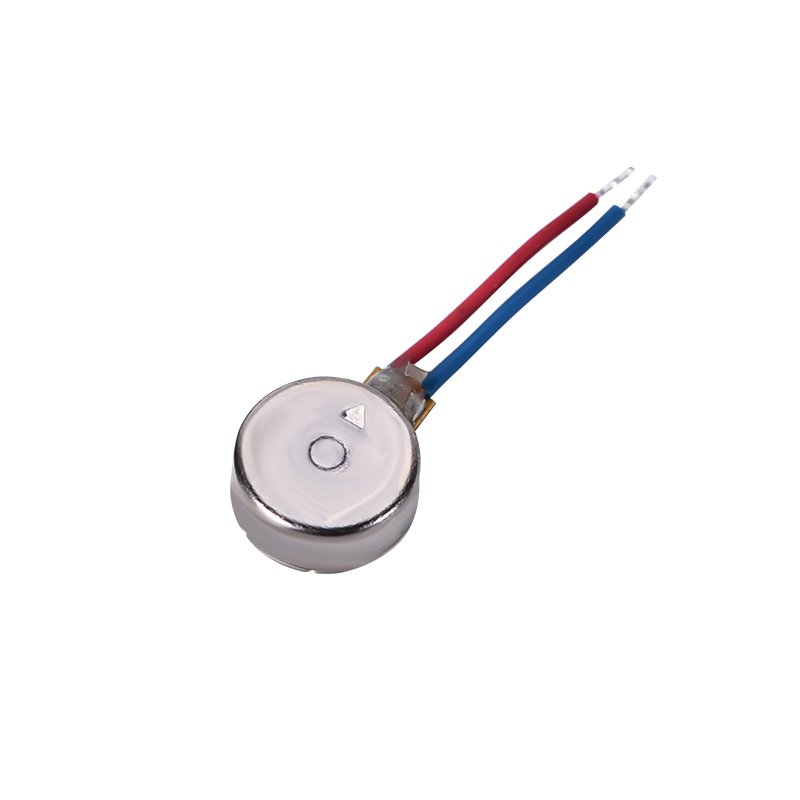
How Brushed Motor Works
You can understand a brushed motor by looking at its basic steps. Here is how it works in your RC vehicle:
Power Supply: You connect a battery or DC power source. Current flows through the brushes and the commutator to the rotor windings.
Magnetic Interaction: The rotor windings become energized. This creates a magnetic field that interacts with the permanent magnets in the stator.
Rotation Begins: The force between these magnetic fields causes the rotor to turn. This force is called the Lorentz force.
Commutation: As the rotor spins, the commutator reverses the current direction. This keeps the rotor turning smoothly.
Brushed motors use simple mechanical parts. You get easy control and reliable low-speed torque. Many beginners choose brushed motors because you can set them up quickly and learn the basics of RC electronics.
How Brushless Motor Works
Brushless motors work differently. You do not see brushes or a commutator. Instead, you find electronic controllers and permanent magnets. The controller switches the current in the motor windings. This creates a rotating magnetic field. The rotor follows this field and spins. You get higher efficiency and less friction. Brushless motors run quieter and last longer. You do not need to replace brushes, so you spend less time on maintenance.
You can use brushless motors for racing or high-performance RC vehicles. They give you more speed and better battery life. You also get smoother acceleration and more power for tough terrain.
INEED Motor Technology Overview
INEED uses advanced motor technology to help you get the best results from your RC vehicle. You can choose from micro DC motors for simple setups or brushless DC motors for top performance. INEED’s brushless motors offer enhanced speed and improved battery life. You can customize torque, speed, and voltage to match your needs. INEED supports RC cars, drones, and other applications with reliable, efficient motors. You get expert support and flexible solutions for any RC project.
Pros and Cons of Brushed and Brushless Motor
Cost and Maintenance
When you choose a motor for your RC vehicle, cost and maintenance matter. Brushed motors usually cost less at the start. You pay between $15 and $25 for a brushed dc motor. Brushless motors start at $200. You spend more up front for brushless, but you save time and money on maintenance.
Motor Type | Average Cost | Maintenance Frequency |
|---|---|---|
Brushed | $15-$25 | Frequent |
Brushless | Starting at $200 | Lower |
Brushed motors need regular cleaning and brush replacement. You must check the timing advance, clean with soap and water, and oil the bearings. Brushes wear out and need replacement when they reach 5mm. Brushless motors do not have brushes, so you avoid this step. You only need to clean dirt, inspect wiring, and lubricate bearings. This makes brushless motors easier to care for.
Performance and Efficiency
Performance is key for RC vehicles. Brushed motors give you good low-speed torque and simple control. You get about 75 to 80 percent efficiency from a brushed dc motor. Brushless motors reach 85 to 90 percent efficiency. The higher efficiency of brushless motors comes from less friction and lower heat loss. You get faster speeds, longer runtimes, and smoother acceleration with brushless dc motor technology.
Brushed motors work well for beginners and basic RC models.
Brushless motors deliver better performance for racing and advanced setups.
The performance of brushless motors stands out in high-demand applications.
Durability and Noise
Durability and noise affect your RC experience. Brushed motors use brushes and commutators, which wear out over time. You may notice more vibration and audible noise. Brushless motors run quieter and last longer because they do not have brushes.
Feature | Brushed Motors | Brushless Motors |
|---|---|---|
Sound | Audible noise with more vibration | Quiet and with less vibration |
Common failure modes for both motor types include overheating, bearing wear, and electrical overstress. You can reduce these risks by following proper maintenance schedules.
INEED Product Advantages
INEED offers motors that improve your RC experience. You can choose micro DC motors for simple builds or brushless gear motors for advanced projects. INEED brushless gear motors provide higher torque, better speed control, and enhanced efficiency compared to standard models.
Feature | INEED Brushless Gear Motors | Standard Brushless Motors |
|---|---|---|
Torque | Higher | Lower |
Speed Control | Better | Limited |
Efficiency | Enhanced | Variable |
Suitable Applications | Precise movements, strong force at low speeds | High speed, less force (e.g., drones) |
You get reliable performance, quiet operation, and flexible solutions for any RC vehicle. INEED brushless dc motor options help you achieve smooth control and long-lasting results.
Choosing the Right Motor for Your RC Vehicle

For Beginners and Budget Buyers
You want to start your RC journey with a motor that is easy to use and affordable. Brushed motors give you a simple setup and reliable performance at low speeds. You do not need advanced electronics or programming skills. You can install brushed motors quickly and get your RC vehicle running in minutes. These motors work well for basic cars, boats, and planes.
Beginner-Friendly: Brushed motors are ideal for first-time users. You get easy installation and operation.
Affordable: Brushed motors have lower upfront costs compared to brushless motors.
Reliable at Low Speeds: Brushed motors provide steady and controlled movement.
You can choose brushed motors from INEED for your entry-level RC vehicle. You get a motor that fits your budget and helps you learn the basics of RC electronics. You can adjust speed by changing the voltage. You do not need to worry about complex maintenance. You only need to clean and replace brushes when needed.
Tip: If you want to build your first RC model or experiment with simple electronics, brushed motors offer a great starting point.
For Hobbyists and Racers
You want more speed, power, and control for your RC vehicle. Brushless motors deliver higher efficiency and longer runtimes. You get faster acceleration and smoother operation. Hobbyists and racers look for motors that support advanced features and customization.
Feature | Importance for Hobbyists | Importance for Racers |
|---|---|---|
Programmability | High | Very High |
Built-in BEC | Medium | High |
Compatibility | Medium | High |
Customization | High | Medium |
Brushless motors give you the ability to program speed controllers and adjust settings for different tracks. You can use brushless motors in high-performance applications like racing cars, drones, and boats. You get motors that run quietly and last longer. You do not need to replace brushes, so you spend less time on maintenance.
INEED offers brushless motors designed for hobbyists and racers. You can select brushless gear motors for precise control and high torque. You get options for different voltage levels and sizes. You can customize your motor to match your RC vehicle’s requirements. You get reliable performance and smooth acceleration for competitive racing.
Note: If you want to upgrade your RC vehicle for racing or advanced hobby use, brushless motors provide the speed and power you need.
INEED Custom Motor Solutions
You may need a motor that fits a unique RC project or application. INEED specializes in customizing motors for different RC vehicles. You can choose from a wide range of brushed motors and brushless motors. You get support for selecting the right motor size, gear ratio, and speed settings.
Customization Aspect | Description |
|---|---|
Speed | Modifiable to meet specific project needs |
Torque | Adjustable for different performance requirements |
Gear Ratios | Options available to enhance performance |
Shaft Designs | Custom designs to fit various RC vehicle configurations |
Encoder Integration | Enhances adaptability for precise control in applications |
You can select motor sizes based on your RC vehicle’s requirements. You can tailor gear ratios to optimize speed and torque. You can adjust speed settings for different types of RC applications. INEED gives you options for encoders and connectors to enhance functionality.
Motor sizes can be selected for your RC vehicle.
Gear ratios can be tailored to optimize speed and torque.
Speed settings can be adjusted for different RC applications.
Options for encoders and connectors are available to enhance your motor’s functionality.
INEED supports you with expert advice and technical assistance. You can upload your design files and get a quick quote. You get motors that match your project’s needs, whether you want brushed motors for simple builds or brushless motors for advanced designs. You get reliable motors for cars, drones, pool cleaners, and smart home devices.
Tip: If you have a special RC project, INEED’s custom motor solutions help you achieve the best results with tailored performance and support.
Common Myths About Brushed and Brushless Motor
Cost Misconceptions
Many RC enthusiasts believe that choosing a motor always comes down to price. You might think that brushed motors are the only affordable option. This idea is common, but it does not tell the whole story. Here are some facts to help you understand the real cost differences:
Brushed motors usually cost less when you buy them. This makes them popular for beginners who want to start with a simple RC vehicle.
Brushless motors have a higher upfront price. You pay more at first, but you get better performance and a longer lifespan.
Over time, brushless motors save you money. You spend less on maintenance and repairs. Their efficiency means you get more out of your battery and enjoy longer runtimes.
If you look at the long-term value, brushless motors often become the smarter investment. You avoid frequent brush replacements and enjoy reliable operation for years. INEED offers both types, so you can choose what fits your budget and needs.
Complexity and Upgrading
You may hear that upgrading from brushed motors to brushless motors is too complicated. Some users worry about wiring, controllers, or compatibility. The truth is, switching can be easier than you expect if you understand a few basics.
A higher KV motor can spin to a higher RPM at a given voltage than a motor of a lower KV, but the trade-off is in torque. Higher KV motors have less torque, so they have to work much harder to propel a vehicle to higher speeds and the trade-off is in increased heat and power consumption. Many guys make the mistake of thinking they can simply switch to a higher KV motor to go faster. While this is true to a degree, it is unfortunately not that simple.
You should not just swap out your brushed motors for a brushless motor without checking your setup. Think about the speed controller, battery, and gear ratios. INEED helps you with upgrades by offering motors that reduce downtime and maintenance costs. You get precise control for different RC applications, which makes your experience smoother and more enjoyable.
Upgrading to brushless motors can lead to big savings over time. Their durability and low maintenance needs make them a wise choice if you want to improve your RC vehicle. INEED supports you with expert advice and flexible solutions, so you can upgrade with confidence.
You can see the most important differences between brushed and brushless motors in the table below. Brushed motors cost less and use a simple design, but you need regular maintenance. Brushless motors offer higher efficiency and better performance at high speeds.
Feature | Brushed Motors | Brushless Motors |
|---|---|---|
Cost | Cheaper | More expensive |
Efficiency | 75%-80% | 85%-90% |
Maintenance | Regular maintenance | Lower maintenance |
Performance | Controllable torque | High-speed operation |
Design | Uses brushes | Electronic controllers |
When you choose a motor for your RC vehicle, think about your goals. If you want speed and control for racing cars, pick a high KV motor. For planes, select a motor that matches the weight and thrust. Drones need low KV motors for stable flight.
RC Vehicle Type | |
|---|---|
RC Cars | Speed and control; high KV motors for racing |
RC Planes | Match thrust to weight for safe flight |
Drones | Low KV motors for stability and efficiency |
INEED gives you quality motor solutions and custom options for every RC enthusiast. You can find more information and products on the INEED website.
FAQ
What is the main difference between brushed and brushless motors?
Brushed motors use brushes to switch current. Brushless motors use electronic controllers. You get less maintenance and higher efficiency with brushless motors. Brushed motors offer simple control and lower cost.
How do I choose the right motor size for my RC vehicle?
Check your vehicle’s weight and desired speed. Match the motor’s voltage and torque to your RC model. INEED offers custom sizing. You can contact INEED for expert advice.
Can I upgrade my brushed motor to a brushless motor easily?
You need a compatible electronic speed controller (ESC) for brushless motors. Check your battery and gear ratios before upgrading. INEED provides support for smooth upgrades.
Why should I consider INEED motors for my RC project?
You get reliable performance.
You can customize motors for your needs.
You receive expert support and fast delivery.
